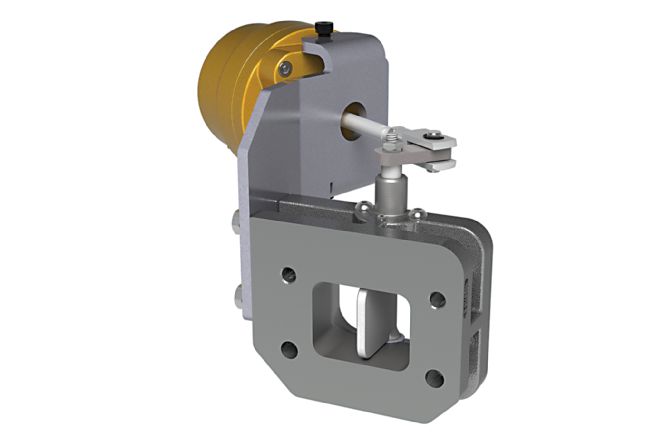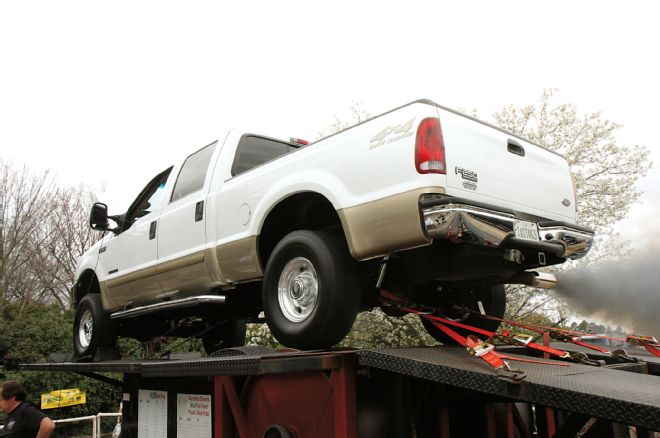Welcome to Top Tech Questions. Oftentimes, readers contact us with questions about articles, or to praise us on what a good job we are doing. But our favorite form of reader communication is tech questions. Our Top Tech section is a place where you ask what’s on your mind, and we answer it. Got a trouble code? Wondering how to get your engine to make more power? Send us an email at
[email protected] and we’ll do our best to answer it.
The Ultimate Single
Question: I was really impressed with your article “The Ultimate Single” (May ’14), since I have been considering a compound-turbo setup on my 6.7L Cummins (second-gen kit with an S366 currently). But I admit I feel the prices just for piping for a compound kit are pretty ridiculous. So my question is, would you still recommend a Garrett GTX4202R for a 6.7L Cummins with the added displacement over the 5.9L in your article, if my goal were 750 to 800 rwhp, fuel only? If not, what would you do?
SSG Kenneth N. Branscum Jr.
via email
Answer: For your application, the ultimate single combination should actually work even better than it did on our 12-valve test truck. The reason is twofold; first, the added displacement of the 6.7L engine will spool the turbocharger even quicker than it did on our 5.9L, and the better flowing cylinder head of the 24-valve engine will reduce the chance of surging or other high-boost problems.
One thing to keep in mind, however, is that even without the complexity of compound turbos, an externally wastegated exhaust manifold, water cooling lines (for the turbo), and a spool valve all take up quite a bit of space under the hood. While you might be able to get away without the external wastegate on a lower-horsepower application, for your power goal it is necessary to keep turbocharger speed under control. Speaking of turbos, the Garrett GTX4202 has a 75.8mm inducer and flows enough air to support approximately 850 to 900 rwhp, so it is more than sufficient for your power goals. For long turbo life, we’d set the wastegate at 50 to 55 psi of boost, although we’ve heard of people taking the Garrett turbos all the way to 65 psi on
Cummins engines without damage.
In summation, we think the ball bearing turbo, spool valve, and wastegate combination would work excellent on your truck, and if you go forward with that setup be sure to keep us posted on your results!

| If you’re on a budget and can’t afford compound turbos,
BD’s Turbine Diverter Valve is worth looking into. By
routing exhaust gases through one volute in a divided
turbine housing, it effectively cuts the turbo’s A/R in
half, creating drive pressure (and low-rpm driveability).
Then, at mid boost (when correctly set up), the valve
begins to open, which slowly allows exhaust to flow
through both volutes and ultimately opens completely
at high rpm (for great top-end performance).
Time To Freshen Up?
Question: I own an 2001 Ford F-350 Super Duty single-rear-wheel crew cab that I bought brand-new when I retired in 2001. My plan was to use the truck in my to-be full-time hobby: rebuilding or restoring old farm tractors and adding a few builds of my own thinking. I towed a 12,000-pound trailer to retrieve old tractors, farm implements, and spare parts for my hobby with an occasional trip to the tractor shows and parades. This truck and trailer combination worked fine for both short and long trips, with my only complaint being the 4R100 transmission… I also use the F-350 as a daily driver and have taken it on some long trips out West. Now, 13 years later, the truck isn’t used as much because of my health issues but is loaded heavier in an effort to save trips and fuel cost. The 7.3L Power Stroke is factory stock and has worked well, but I would like to freshen it up and add aftermarket upgrades to increase power, performance, and fuel economy without breaking the bank account. Remember, retirement is a fixed, steady income without pay raises, and I can invest about $7K in upgrades. I hope 450 hp is possible, but I don’t need a competition truck. I just need something with better power and driveability when I do tow the trailer with cargo. With the cost of new diesel pickups soaring to heart-stopping numbers, that’s out of my comfort zone.
So here’s my questions:
1) Your magazine has advertisements from many manufacturers for the same item (air filter kits, tuners, exhaust systems, fuel injectors, turbos, and so on), but has Diesel Power tried to find out which systems work best together to reach optimum results?
2) I would like to replace the 4R100 with a 5R110 from the ’03 model year to get the extra gear plus the downhill braking feature. Will my PCM/ TCM support this change?
3) Will stock injectors support 450 hp, or does Ford have an injector that will?
4) Would the stock turbo support 450 hp? If not, what would you recommend as a cost-effective replacement?
Ray Bryant
Williston, Florida
Answer: There are several ways you can go about improving the functionality of your truck. As for the added power, it just depends on how badly you want it (or need it) to make 450 hp.
To answer some of your questions above, stock injectors can support 320 to 350 hp (at the rear wheels), which is as far as we would push the stock turbo. If you want to venture beyond that power level, you’ll need to upsize your injectors, match them with a higher-flowing turbo, and spend roughly $3,500. But then you would need a built transmission to hold the added power the extra fuel and air would provide, and with your budget already cut in half, obtaining a bulletproof 4R100 would put you at least $1,500 over the $7K mark. As for the 5R110 swap, Powertrain Control Solutions offers a stand-alone controller (and good tech support) for making this type of transmission swap as seamless as possible, but unless you have a donor 5R110 sitting around, this could get expensive fast. Plus, the 5R110 has the same Overdrive gear ratio as the 4R100 (0.71), so you’ll only benefit from lower gear ratios in First through Fourth gear…
A $7,000 budget is definitely the biggest restriction if you want to add considerable power to your 7.3L (big surprise, right?). In an ideal world—where (of course) budget is of no concern—we’d purchase a built transmission from the 4R100 transmission experts at either Brian’s Truck Shop or John Wood Automotive; install a set of Stage 3 hybrid injectors (Full Force Diesel or Unlimited Diesel Performance), a Garrett GTP38R turbo, 4-inch turbo-back exhaust (MBRP), and regulated-return fuel system (Strictly Diesel); swap out the factory lift pump for a Walbro GSL392; and dial everything in via a custom-tuned TS Performance six-position chip. However, going that route would set you back approximately $9,500 (no labor included).
To stay under budget yet liven up your stock 7.3L, we would recommend a TS Performance six-position chip; 4-inch turbo-back exhaust; EGT, boost, and transmission temperature gauges (Auto Meter); overboost annihilator (Strictly Diesel); and, because you tow relatively heavy with the truck, a TransGo Tugger shift kit to help keep the factory transmission alive with the added power. This combination should give you a reliable 320 to 350 hp, provided the engine sees ample fuel supply pressure (55 to 65 psi) and adequate high-pressure oil volume is present in the injection system (2,600 to 3,000 psi of injection control pressure). The above parts combination would run you roughly $1,500.
Another final option is to space out your build (over a couple of years) to lessen the initial blow to your wallet. If you went this route, you would spend more in the long run but, in our opinion, you would be building your truck the “right” way. We’d start with the transmission (because any power added on top of the stock one at this point might kill it), then add a 4-inch turbo-back exhaust, the aforementioned gauges, regulated-return fuel system, Stage 3 hybrid injectors, a custom-tuned TS Performance chip, and then a Garrett GTP38R turbo, in that order. This would net you 500 rwhp in a performance tune, but the truck could be detuned to 350 rwhp with a turn of the knob on the TS Performance chip for towing duties.

| If you ask us, there is a fine line when it comes to modifying a 7.3L Power Stroke. You either go all out and spend the money it takes to reach your horsepower goal (built transmission,
turbo, injectors, and such), or you stay close to stock and add a chip, exhaust, and a shift kit in the factory transmission. There is not a lot of middle ground to be had here
without sacrificing the driveability of the truck.
 | If you’re on a budget and can’t afford compound turbos,
BD’s Turbine Diverter Valve is worth looking into. By
routing exhaust gases through one volute in a divided
turbine housing, it effectively cuts the turbo’s A/R in
half, creating drive pressure (and low-rpm driveability).
Then, at mid boost (when correctly set up), the valve
begins to open, which slowly allows exhaust to flow
through both volutes and ultimately opens completely
at high rpm (for great top-end performance).
| If you’re on a budget and can’t afford compound turbos,
BD’s Turbine Diverter Valve is worth looking into. By
routing exhaust gases through one volute in a divided
turbine housing, it effectively cuts the turbo’s A/R in
half, creating drive pressure (and low-rpm driveability).
Then, at mid boost (when correctly set up), the valve
begins to open, which slowly allows exhaust to flow
through both volutes and ultimately opens completely
at high rpm (for great top-end performance).
 | If you ask us, there is a fine line when it comes to modifying a 7.3L Power Stroke. You either go all out and spend the money it takes to reach your horsepower goal (built transmission,
turbo, injectors, and such), or you stay close to stock and add a chip, exhaust, and a shift kit in the factory transmission. There is not a lot of middle ground to be had here
without sacrificing the driveability of the truck.
| If you ask us, there is a fine line when it comes to modifying a 7.3L Power Stroke. You either go all out and spend the money it takes to reach your horsepower goal (built transmission,
turbo, injectors, and such), or you stay close to stock and add a chip, exhaust, and a shift kit in the factory transmission. There is not a lot of middle ground to be had here
without sacrificing the driveability of the truck.